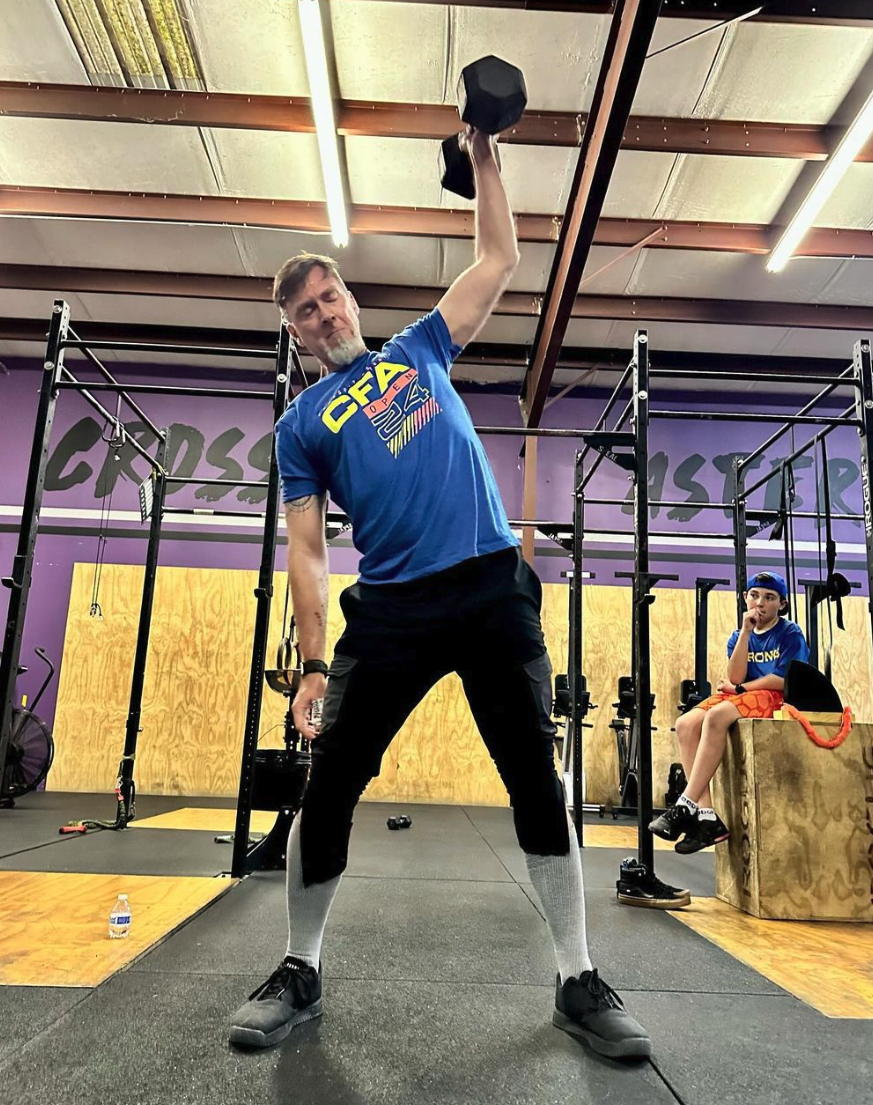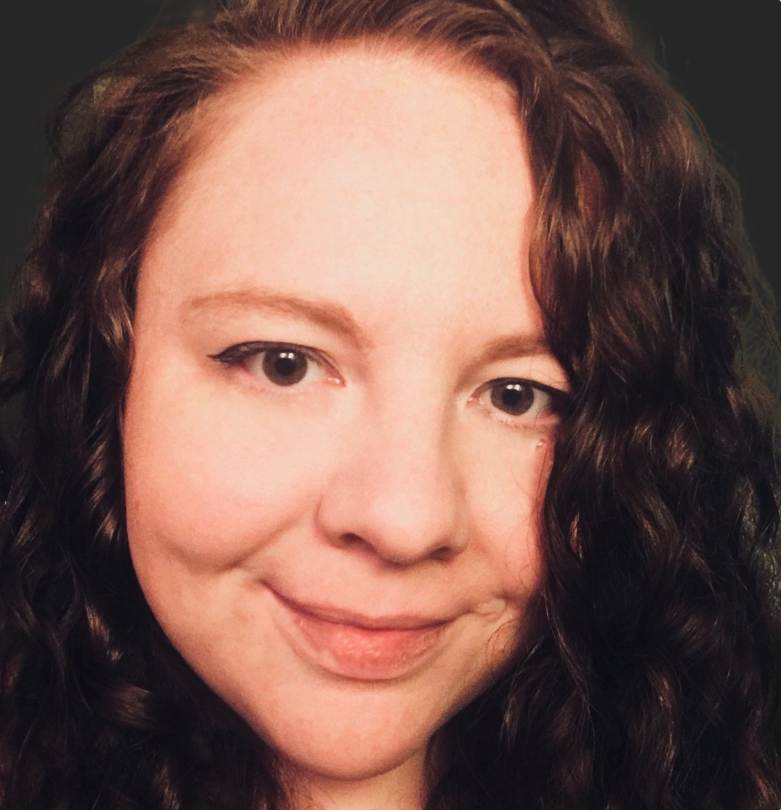In February 2024, CrossFit affiliate owners, coaches, and healthcare professionals came together for the CrossFit for Health Summit, presented by GORUCK. CrossFit thought leaders led panel discussions on fitness, performance, and the hard work of health, while renowned experts shared cutting-edge research on longevity, chronic disease, mental health, and community — and CrossFit’s powerful role in it all.
Chronicles From the CrossFit for Health Summit: How Steven Smith Beat Cancer With CrossFit
April 19, 2024
Steven Smith loves to sing in the car.
He grew up singing tenor in the church choir, and he might’ve made a career of music if he hadn’t gone into the military.
But the car? That was the perfect place to belt out a little Sam Smith. Except one time in October of 2022, he had trouble hitting the high notes of his namesake’s falsetto.
He didn’t think much about it until a few days later when, while shaving, he noticed a small lump on the left side of his neck.
The ultrasound technician was a friendly, chatty woman. She and Smith laughed and joked as she drew her wand along the right side of his neck.
“And then she gets to this side,” Smith recalled, pointing to the left side of his neck, “and just a few seconds later, she gets very serious.”
Oropharyngeal cancer — Smith’s was Stage 2 — is generally responsive to treatment, but it’s aggressive. So, treatment has to be aggressive, too: daily high-dose radiation therapy coupled with chemotherapy.
“Because it’s all centered on your head and neck, it’s the hardest kind of treatment that you can go through, period, for cancer,” Smith said.
Radiation to the head and neck can lead to a host of significant side effects, including permanent loss of saliva, osteoradionecrosis of the jaw, neurological damage, pharyngoesophageal stenosis, and more.

Steven Smith during CrossFit Open Workout 24.1 I Photo courtesy of Steven Smith
Smith was 50 at the time of his diagnosis.
“The doctor basically said if I was a normal 50-year-old, we would be having a different conversation,” he continued.
Thankfully, Smith was atypical. He’d been generally active for most of his life and had spent the previous two years doing CrossFit — which he’d started to recover from an entirely different medical malady.
In 2020, Smith developed double pneumonia after contracting COVID-19, consequently losing somewhere between 20% and 30% of his lung tissue. Once recovered, he started CrossFit to rebuild his lung capacity.
“When I first went in, I would have to take a big hit of my inhaler because my lungs were still crap,” Smith recalled.
By 2022, he was doing the CrossFit Open as prescribed — and his fitness would prove to be a lifesaving buffer against sickness once the cancer came along.
“I could have more aggressive treatment because I could handle it; my body could take it,” Smith said.
After his diagnosis, Smith had about two months of testing before treatment could begin.
“So I took that opportunity to prepare,” he said.
And by “prepare,” he meant “get even more fit.” Between October and December, Smith put on about 20 pounds of muscle training at CrossFit Asteria, starting treatment with 225 pounds on his 6-foot-4 frame. After just four weeks of radiation and chemo, he’d dropped to 172 pounds.
Smith’s 53-pound loss is an example of cachexia, a muscle-wasting syndrome responsible for up to 30% of deaths in cancer patients. As Dr. Gabrielle Lyon said at the 2024 CrossFit for Health Summit in Austin, Texas, “muscle is the currency of life,” and thankfully, Smith built up emergency reserves.
And the cancer-fighting elements of exercise extend beyond just the preservation of muscle mass.
Also at the Summit, Dr. Rhonda Patrick spoke about the “shearing forces of blood flow,” in which faster blood flow — induced by exercise — kills circulating tumor cells.
“They can’t handle the stress like normal cells can, and they die,” she said.
Smith finished treatment in late February 2023, left with side effects including loss of hearing (he now wears hearing aids), nerve damage, and scoliosis.
“But without CrossFit, those things would have been so much more severe,” he said.
Smith returned to the gym in March of 2023, feeding tube “flopping around.”
“I was barely able to back-squat the bar,” he said.
Just over a year later, Smith celebrated his fourth CrossFit Open, which he completed as prescribed and cancer-free.
“I’m determined not to let cancer win,” he posted to Instagram.
That’s not all he’s determined to do. Smith — who holds five degrees, works as an educator and public speaker for NASA, and is also a CrossFit Level 1 Trainer — is now working on a doctorate in public health.
The goal, he said, is to help bridge the gap between fitness and healthcare and educate medical doctors about CrossFit.
“One of the things … I took most from the Health Summit and one of the things that I want to do when I finish my doctorate and I’m really able to be in that space in an official way is make those connections,” he said.
Until then, he educates by advocating for the power of fitness — even when 100% prevention is impossible. After all, Smith’s cancer was not the result of lifestyle choices. He exercises, eats a nutritious diet, and doesn’t drink or smoke.
Some might say that’s a reason not to care. Why bother with healthy habits if the big C comes for you regardless?
“My treatment tolerance, my recovery after, and being here standing in front of you today is because of my fitness level,” Smith said. “And my fitness level is because of CrossFit.”
About the Author
Brittney Saline is Senior Writer and Editor for CrossFit, LLC. Previously, she was a writer and editor for the CrossFit Journal. She’s been sharing powerful stories from and for the CrossFit community since 2012, covering topics ranging from problems with healthcare and Big Pharma to CrossFit’s potential for reversing symptoms of Parkinson’s disease to discourses on femininity and musculature. She lives in Minneapolis, Minnesota, with her pug, Leo. Got a story to share? Email Brittney here.
